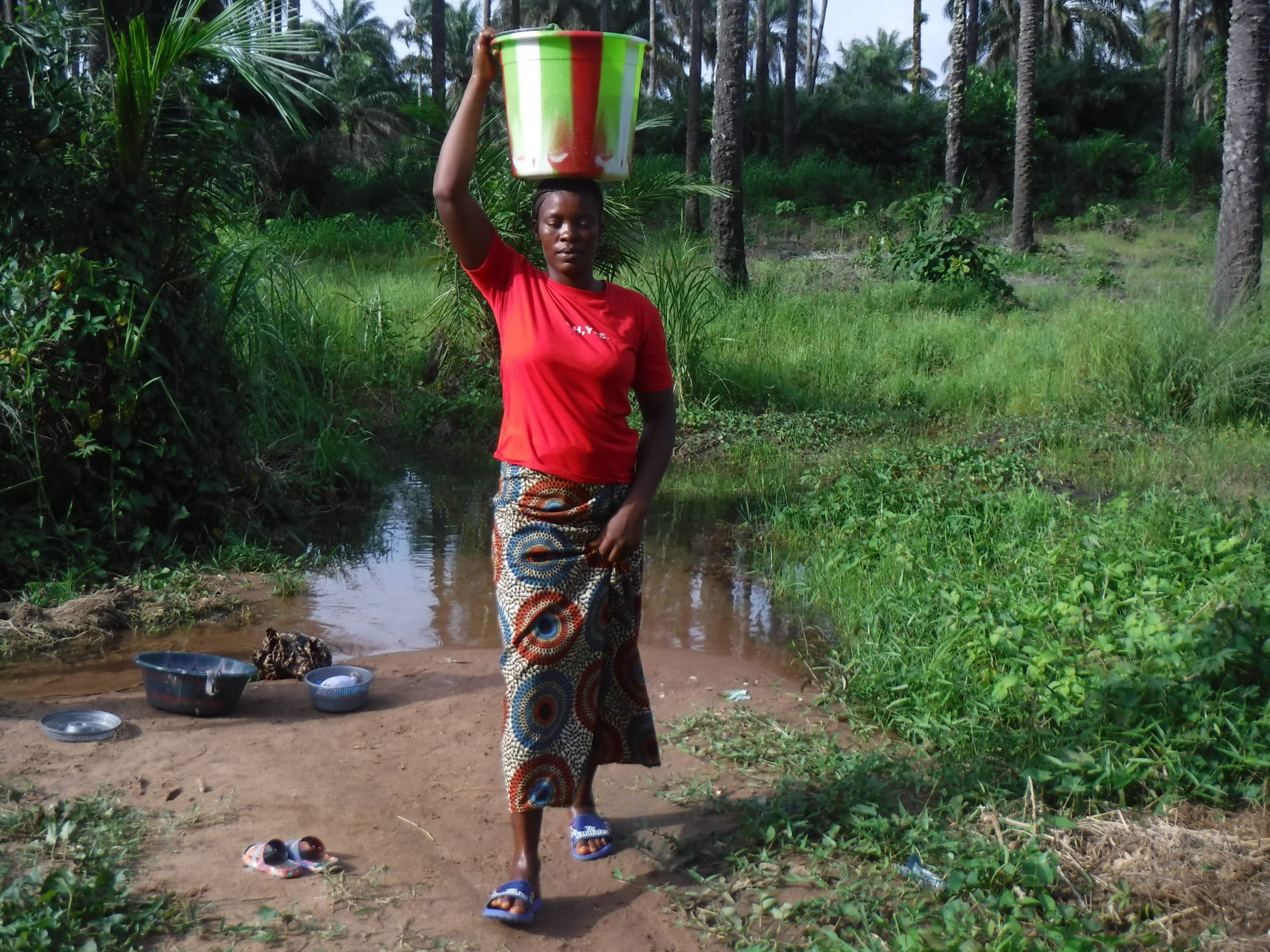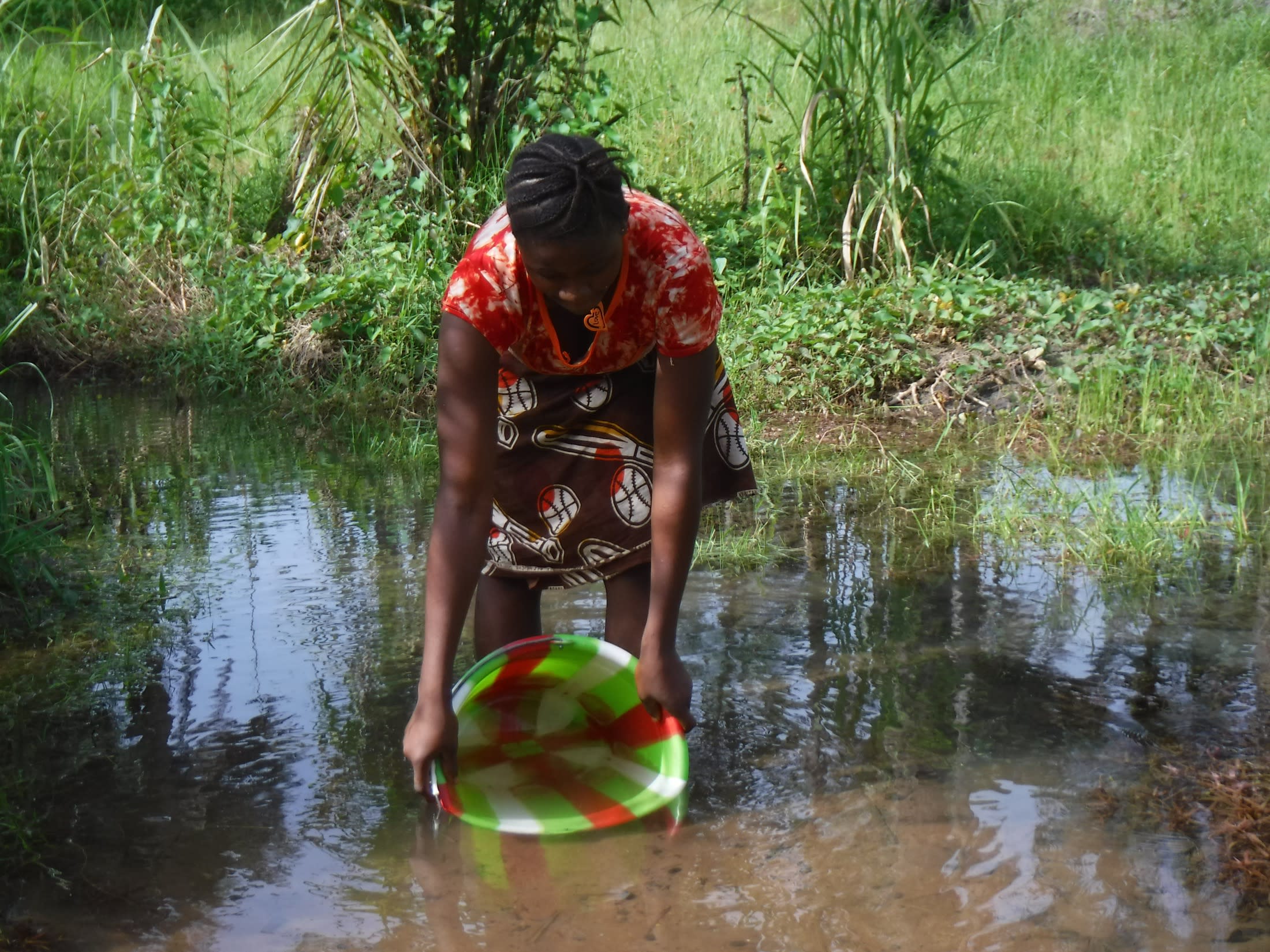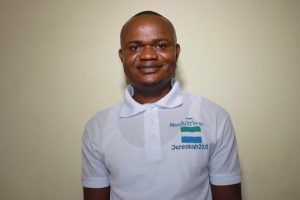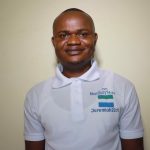Sakaya Village, a community of 212, has a hand-dug well for the water they need. But the well cannot provide sufficient water in its current state, so it needs to be drilled deeper. It has not been rehabilitated in the past 35 years and there is no routine maintenance, chlorination, water testing, or proper monitoring.
There is no fence around the well, leaving it open to animals. The well pad is crumbling and because of the high demand, there are frequent breakdowns of the pump. The well is also seasonal, so during the dry months (March-May), it does not have enough water to offer, and people must collect water from the nearby swamp instead.

Farmer Kadiatu Sankoh (in the photo above), 32, said, "It is hard to fetch water at the main water source at the beginning of every dry season because of the demand from the whole village. There would not be enough water in the well to serve everyone at the same moment."
She continued, "It is not easy to fetch water at the swamp because the place is far from my house. Sometimes the water gets filthy when so many people fetch water, or some had done washing activities at the source."
She also shared her struggle to complete her everyday tasks. "Most of my daily activities are not properly done or delayed because I [take] more time fetching water than any other thing I have to do. I need to spend more time on my farming during the planting season, but I cannot leave my house without water to go and work on the farm. I had to cook and bathe my children after coming from the farm, but without water, I would not be able to do all those things."
As Kadiatu shared, the swamp is far away and difficult for people to access. They must follow a footpath through the bushy environment where snakes are known to be. The swamp sits at the bottom of the sloping landscape and is open to all kinds of contamination, including runoff from farms, people doing their laundry or bathing in the vicinity, and animals.
Water from the swamp is dirty, especially during periods of high demand, because people stir up dirt and debris to scoop water. Community members try to make the water "cleaner" before consuming it and place their bucket of water on the ground to allow the dirt to settle to the bottom, but this does not make the water safe.

"I thank God because now the rain is providing water for us, but after this season, it will be hard to fetch water in this community, especially to drink. I fetch water at the main pump, but there will come a time the well gets dry or low. At that moment, there will be more people waiting to fetch the little water the pump provides. It is not an easy moment because having other things to do and spending more time at the well will cause delays on other things I have to do," said Fatmata B. (in the photo above), 16.
The water challenges individuals face in this community also produce health threats. By consuming contaminated water, many struggle with water-related illnesses such as ongoing diarrhea, which leaves them without the energy to be productive.
It is challenging and sometimes fruitless for people to attempt to collect water from the main well, and often people return to their houses with little or no water. It needs rehabilitation to provide sufficient, clean water for all those who rely on it to focus on other tasks they need to accomplish in their day.
Here’s what we’re going to do about it:
Well Rehabilitation
The well marked for this overhaul is dry for a few months every year and needs major work to supply adequate, clean water to the community year round. The pump will be removed, and a hand auger will be lowered inside and powered by a drill team. This hand auger will allow the team to drill several meters deeper to hit a sufficient water column that will ensure the well supplies water throughout all seasons.
As the team drills, casing will be installed, transforming the bottom of this hand-dug well into a borehole. PVC piping will connect this lower system directly to the pump, a construction that we know will also improve the quality of water.
Once this plan is implemented, everyone within the community will have access to safe drinking water in both quality and quantity, even through the dry months.
Hygiene and Sanitation Training
There will be hygiene and sanitation training sessions offered for three days in a row.
After our visit, the hygiene and sanitation trainer decided it would be best to teach community members how to build a tippy tap (a hand-washing station built with a jerrycan, string, and sticks). They will use these tippy taps for handwashing demonstrations, and will also teach about other tools like dish racks and the importance of properly penning in animals.
These trainings will also strengthen the water user committee that manages and maintains this well. They enforce proper behavior and report to us whenever they need our help solving a serious problem, like a pump breakdown.

 Borehole Well and Hand Pump
Borehole Well and Hand Pump



































